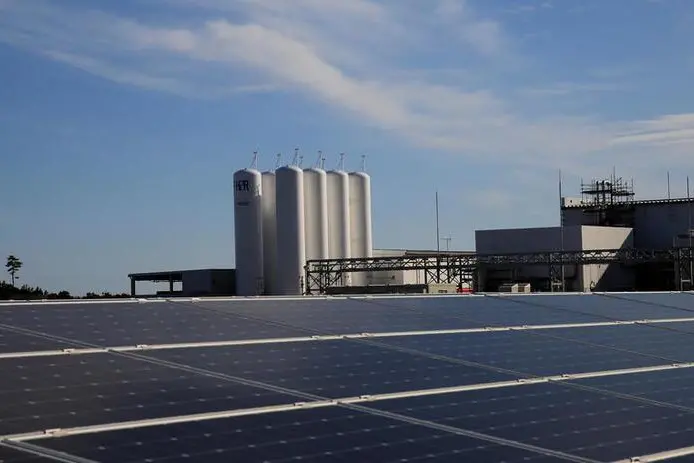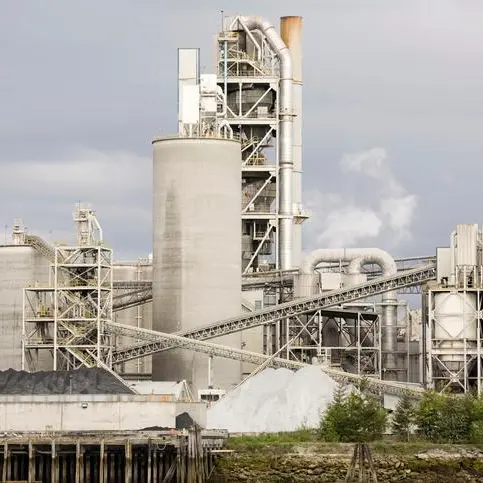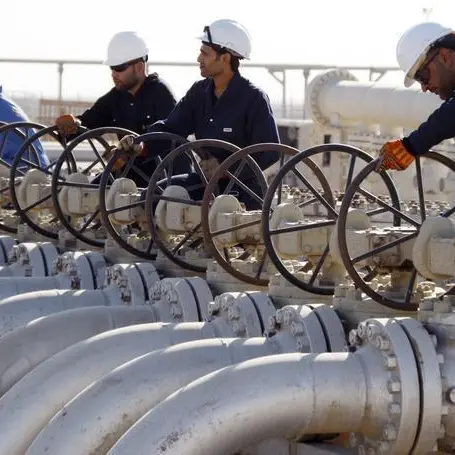PHOTO
As the world decisively moves towards a low carbon future, natural gas is expected to make the transition affordable, but that "bridge" could be narrowing as green initiatives like Net Zero, and investment in hydrogen kick in, according to energy industry experts at a virtual forum.
"The role of natural gas as a bridge (fuel) in the energy transition is getting shorter and narrower," said Dexter Wang, Asia Market Engagement Lead, S&P Global Platts, during a virtual panel discussion at the recent Singapore International Energy Week (SIEW) 2021, Energy Insights Webinar series.
He pointed out that Net Zero and other green policies that push renewables and hydrogen could reduce natural gas use even as the fuel displaces coal in developing economies.
Dr. Peter Zeniewski, Lead Energy Analyst, World Energy Outlook, International Energy Agency (IEA), said about 1.5 trillion cubic metres of natural gas - about 40 percent of today's demand – would be displaced by efficiency, renewables, and electrification over the next two decades if the world were to reach net-zero emissions by 2070.
He said gas demand would see a 300 billion cubic metres (BCM) upside as it displaces coal, especially in the power sector, and biogas and biomethane demand would go up by 200 BCM, replacing natural gas in a wide variety of sectors.
At the same time, measures like cleaning up methane emissions, using renewable energy to power upstream equipment, capturing CO2, and eliminating routine flaring also impact different parts of the natural gas supply chain.
"The net effect of all these measures is a reduction in natural gas demand by about 500 BCM by 2040 compared to today…. that's around 10 percent lower than today," Zeniewski said.
In a net-zero by 2050 scenario, he said coal demand would decline by 90 percent even with the large-scale deployment of carbon capture, oil by 75 percent from 88 million barrels in 2020 to 24 million barrels by 2050, and natural gas by 55 percent.
In the 2050 scenario, Zeniewski continued, renewables would account for 30 percent of electricity generation by 2030, electric car sales rise 20 times from three percent today to over 60 percent by 2035, low carbon solids and liquids like ammonia, synthetic fuels, and biofuels offset a large portion of coal demand drop and hydrogen-based fuels account for 13 percent of global final energy demand by 2050.
Affordability is the key
The speakers agreed that efforts towards carbon reduction should begin immediately, but the transition should also be affordable.
"We need this transition period to bring down costs and ramp up production of low carbon fuels and hydrogen. Hydrogen can form 10-20 percent of the final energy mix by 2050. Still, it can be higher given the current momentum behind it," said Fabian Kor, Group Head of Strategy & Corporate Development, Pavilion Energy.
He said in the short to medium term, the economic justification for hydrogen could be tough outside its current mainstream use unless costs and use of hydrogen are subsidised, and fossil fuels are penalised.
"The key is to prioritise the use of green hydrogen to big sectors where there are no cheaper decarbonisation alternatives," said Kor.
"The relative cost advantages of hydrogen production technologies are highly regional and are correlated with energy prices, CAPEX and capacity factor," said S&P Global Platts' Wang.
Kor added that for Liquefied Natural Gas (LNG) to compete, it needs to be decarbonised, and the focus should be on technology, increasing efficiency, and using carbon offsets to mitigate emissions.
Blue versus green hydrogen
Production of blue hydrogen, derived from natural gas with carbon capture, can be a significant market for natural gas, said Vincent Demoury, Secretary-General, International Group of Liquefied Natural Gas Importers (GIIGNL).
"Scale is vital, and we think natural gas can enable this scaling up before we get to being sufficient excess renewable capacity to produce green energy cost-effectively. Opting for dedicated green energy now could prolong the use of more polluting thermal power," he said.
Leveraging existing gas infrastructure
In the near term, existing natural gas infrastructure could be used to build capacities and capabilities to produce hydrogen.
"Blending up to 20 percent hydrogen into the natural gas grid could be the first step to build capacity and in the longer term, move over to building dedicated hydrogen systems," said Tim Karlsson, Executive Director, International Partnership for Hydrogen and Fuel Cells in the Economy (IPHE).
Mario Franchin, Senior Vice President Commercial Global Solutions, Snam, added that a new dedicated hydrogen pipeline could cost about $1 per kg, much higher than an existing pipeline.
"The most competitive way would be to use the existing facility. For instance, Italy's pipeline network is now 70 percent ready to transport hydrogen. But it depends on the volume of hydrogen (being transported)" as huge volumes require huge demand and creating huge demand will also help scale technology, he said.
Both Zewenski and Kor suggested that developing industrial clusters with hydrogen-producing locations and building large-scale local supply chains to serve industries could minimise transport costs and achieve cost reductions.
LNG and hydrogen in the maritime sector
The maritime sector is a growing market for LNG and an enabling partner for the development of hydrogen, said Demory. Ports and LNG terminals offer the perfect environment to develop hydrogen locally as they are located close to industrial centres and LNG terminals, he said.
"We see LNG (bunkering) growing about 20 percent this year. We have about 20 bunkering vessels available today, and in 2023 we will have 45 worldwide," he said.
In November 2020, Total completed its largest LNG bunkering operation involving 17,300 cubic metres of LNG for CMA CGM Jacques Saadé, the world's largest LNG-powered containership. The carbon footprint of the LNG delivered was further reduced with the introduction of biomethane for approximately 13 percent of the quantity delivered.
"We already see the shift from unabated to abated and bioenergy and, in the future, increasingly synthetic energy," he said.
Policy needed
Scaling up hydrogen is almost impossible without supportive policies and a strong energy governance ecosystem, said Zeniewski.
"For hydrogen to compete, you need to roll out hydrogen and backbone subsidies. It will also depend on the emissions reduction targets, country strategies to achieve them, carbon pricing policies, codes and obligations, and energy market design, to name a few," added Kor.
"There needs to be a global perspective and understanding of how much GHG emissions are related to renewable energy and electrolysis. We're trying to work on those methodologies and coming to some consensus that we think we would take to a standards body," said Karlsson.
He added that it is crucial to analyse trade rules, tariffs, customs obligations, and safety certifications and ensure countries don't encounter unintended barriers to trade.
(Reporting by Sowmya Sundar; Editing by Anoop Menon)
Disclaimer: This article is provided for informational purposes only. The content does not provide tax, legal or investment advice or opinion regarding the suitability, value or profitability of any particular security, portfolio or investment strategy. Read our full disclaimer policy here.
© ZAWYA 2021












